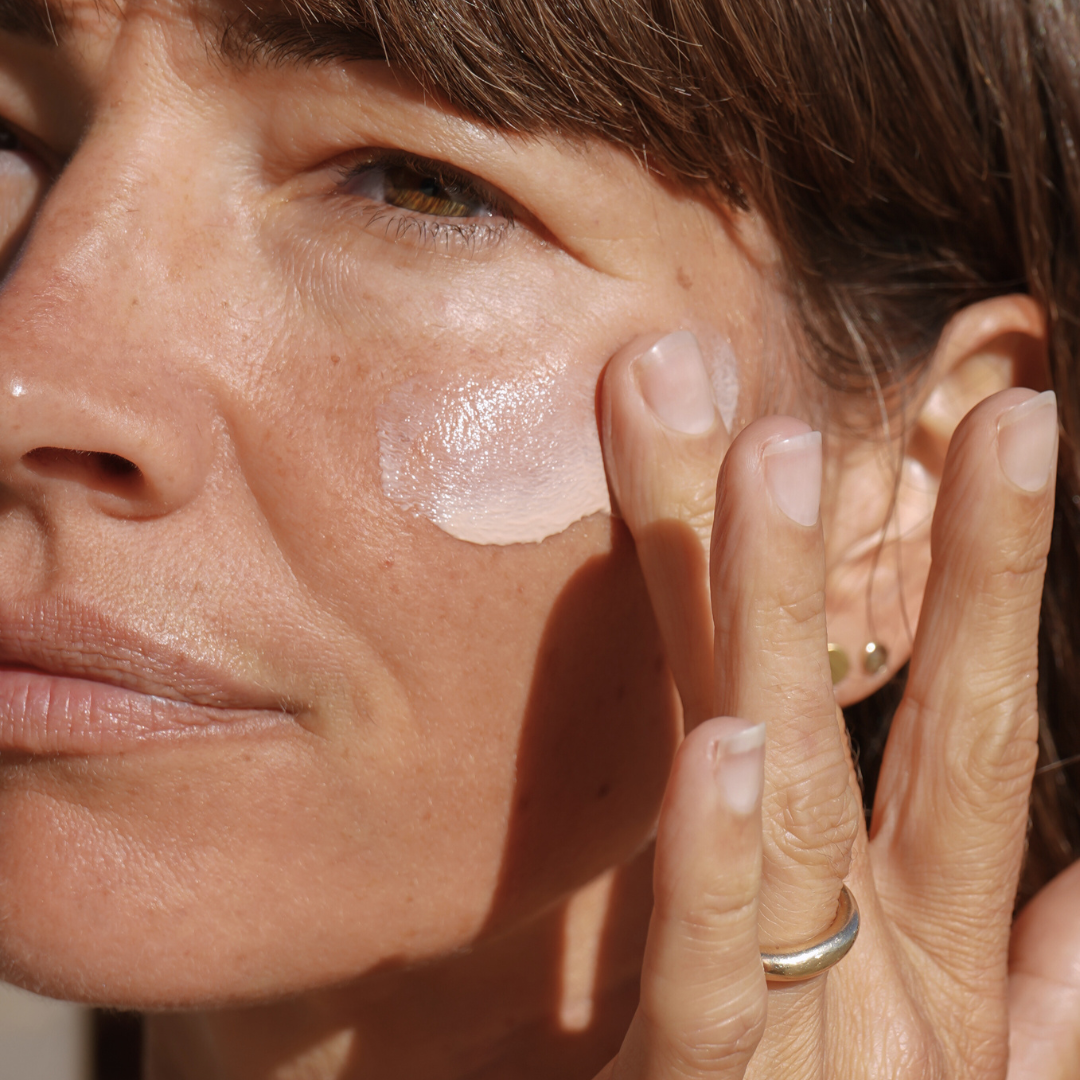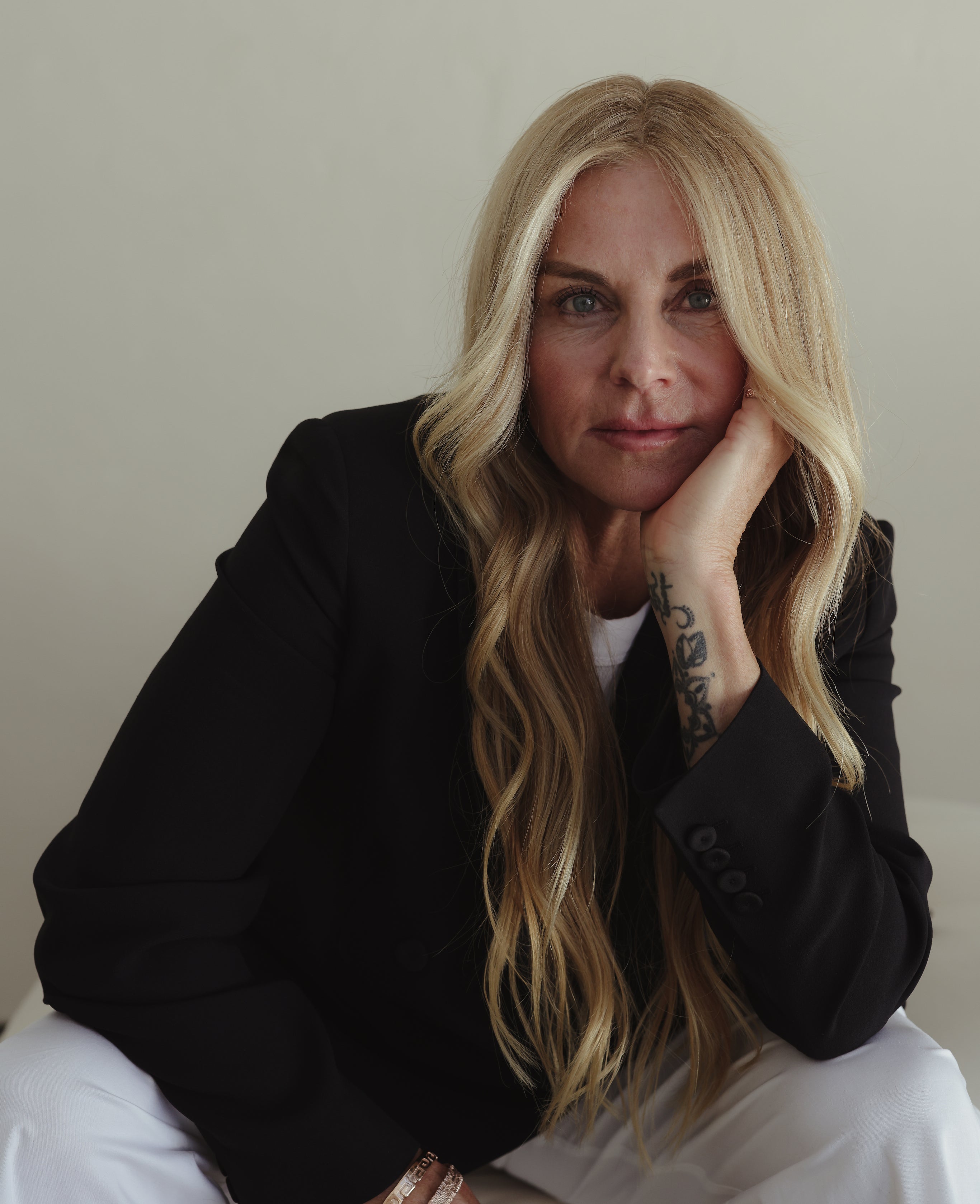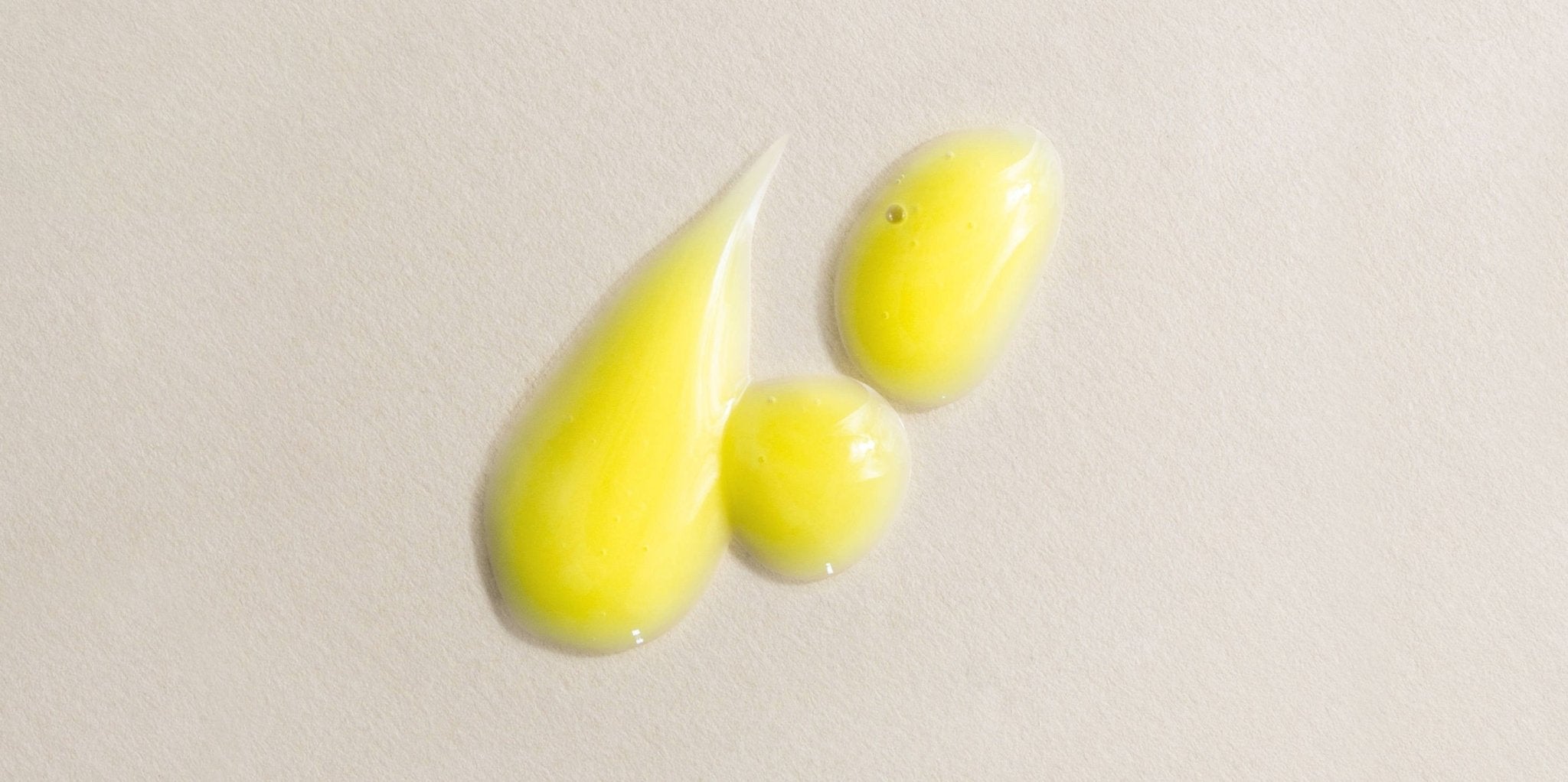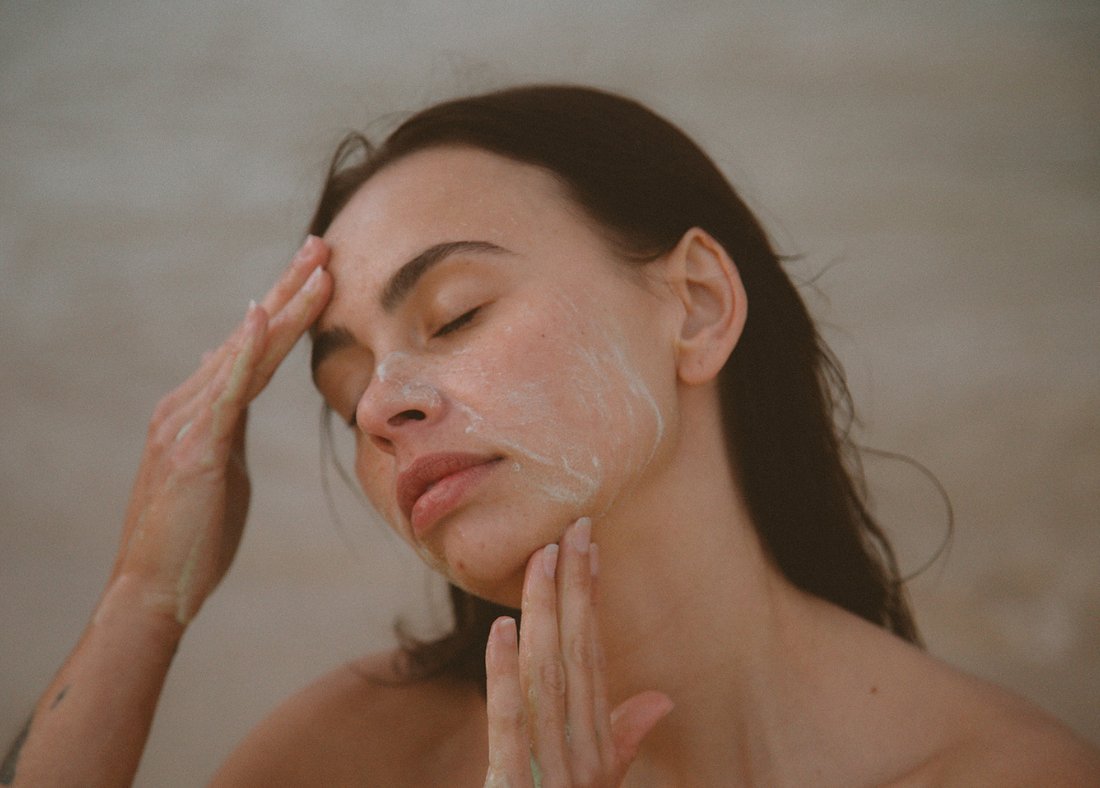
Sunscreen: The Foundation of a Healthy, Daily Skincare Ritual
If you’re a gen X Australian like me, you would have grown up with one of the most successful health campaigns in Australian history. I vaguely remember a cheerful seagull dancing across the screen decked out in board shorts and a t-shirt singing the jingle, 'slip, slop, slap'.
To that campaign (and my mother), I am eternally grateful. My happiest childhood memories revolve around summer holidays when we bundled into the car and drove from country NSW to the beach for a month of sunshine, surf and sand. Fortunately, my European mother was a stickler for sun protection and adorned us in thick lashings of pasty coloured zinc and daggy hats whilst we surfed and sunned our carefree childhood away.
Sunlight, is composed of ultraviolet (UV), visible and infrared radiations. She gives our beautiful planet earth life-force, energy, light and warmth as well as maintaining oxygen in our atmosphere via photosynthesis. When we look back through the history books we can discover that the sun has long been revered for her many health benefits and that her warming, golden rays have been celebrated and worshipped by ancient cultures in some form or another for very good reason.
It's a known fact that without sufficient sunlight, our moods can drastically alter. Direct sunlight on your skin and in your eyes (without sunglasses) for 10-15 minutes a day (early morning or late afternoon) will increase your vitamin D levels, which can make you happier, reduce your risk of diabetes and certain cancers, and can even boost fertility. The sun helps trigger serotonin and dopamine during the day and releases melatonin to prepare us for a good night's sleep. The sun is essential for vitamin D production which our bodies produce when our skin is exposed, aiding our overall health and feeding the mitochondria of our cells.
Still, too much sun can cause DNA damage that depletes your skin’s vitamin A stores and destroys collagen and elastin. This is what causes sunspots, wrinkles, and loose skin as you age. So, when it comes to sunlight and the long summer months, we do need to remain mindful and adequately protect ourselves from the full force of her potential that can cause irreparable damage to our skin.
Australia has the highest rate of skin cancer in the world and we irrefutably know that the sun causes skin cancer. Australian women also photo-age well ahead of their years compared to other countries with one study showing that we can be aged about 20 years older than most European or overseas women at the same age primarily due to sun damage. I am equally surprised and horrified when I see beautiful, young things baking their juicy, bouncy collagen filled bodies and faces to a crisp on the beach anytime after 10am. Any dermatologist, esthetician or beauty therapist will devoutely tell you that the number one, age-defying skin tip to adhere to is adequate sun protection.
UVA is consistent in our fair land 365 days of the year. Even if you’re not burning, or you’re not outdoors for more than a couple of minutes - dropping the kids off to school, walking to your car, hanging out the washing or going to the supermarket, you can still be exposed to enough UVA to age prematurely and potentially get skin cancer. By using some form of preventative daily protection, you’ll be a lot better off in 10 or 20 years’ time than you would be otherwise.
WHAT'S IN A TAN?
Melanocytes sit below the top layer of skin and produce pigmentation that gives your skin colour (tan). When you expose your skin to the sun, the melanocytes are activated and, your skin essentially undergoes some form of damage. The basal layer of your skin sits beneath the top layer. At this level, the skin cells divide and this is the main reason why your skin requires adequate protection from harmful rays.
UVA and UVB radiation are the main types of radiation from the sun that cause premature ageing.
UVB
UVB increases pigmentation produced by the sun. UVB rays are the ones that cause burning and redness as well as skin cancer and DNA damage to the cells. UVB penetrates to a depth where the cells divide and if you cause DNA damage at that deeper level, those cells are prone to abnormalities and are more likely to become a cancerous cell. Each time you expose yourself to the sun, they divide and can mutate further.
DNA damage that’s caused by the sun can lie dormant in your cells. If the DNA is already damaged, that risk is much higher. If you were exposed to sun damage in your childhood, teens or twenties, by the time you reach your forties, fifties and sixties the cumulative damage shows up when your body isn’t as good at controlling cell division and checking for mutations.
UVA
UVA penetrates deeper into the dermis layer underneath to top layer and increases your tan by darkening the existing pigment in the top layer of skin cells through a process of oxidation. It gives your skin instantaneous colour and a radiant glow that gradually fades once the skin is no longer exposed to the sun and as the cells naturally desquamate (shed).
Whilst it may give you a lovely, "healthy" temporary glow, UVA causes skin damage and premature ageing because it damages collagen, decreases skin immunity, creates oxidative damage and increases the risk of skin cancer.
DOES SUNSCREEN COMPLETELY BLOCK OUT THE SUNLIGHT?
No sunscreen can completely block out UV light. Only protective clothing and a broad brimmed hat can do that but you will still receive reflective light on your face even with a hat on. Sunscreens with a lower SPF will offer moderate protection and allow you to tan without burning as well as reduce DNA damage caused by UVB minus the toxic chemicals.
Unfortunately, most sunscreens aren’t much better for you than the sunburns they prevent. Many varieties contain nasty, hormone-disrupting chemicals that your body absorbs and can be measured in blood, urine, and breast milk. And those are just the chemicals we know stuff about. A Danish review of active ingredients in common sunscreens determined that there’s not much information about them. Sixteen of the 19 ingredients reviewed had zero information about their potential to cause cancer.
WHAT IS SUNBURN?
Sunburn causes DNA damage to the keratinocyte. When DNA gets damaged, our skin reacts by becoming red and inflamed and if the radiation damage is at a deeper level, it can destroy the skin cells resulting in blisters, peeling and skin ageing.
WHAT ARE CHEMICAL/SYNTHETIC SUNSCREENS?
Chemical or synthetic sunscreens are found in products with SPF of 30+ and may be a combination of the following: oxybenzone, avobenzone, octisalate, octocrylene, homosalate and octinoxate. Studies are emerging that some of these constituents act as allergens and hormone disruptors whilst also having a deleterious effect on our environment, coral reefs and waterways. Chemical sunscreens are designed to absorb UV light which is then transmitted as a low energy heat. They get absorbed for a period (exposure) by the outer layer of the (dead) skin.
WHAT ARE PHYSICAL/MINERAL SUNSCREENS?
Physical sunscreens are made up of fine particles of either zinc oxide and titanium dioxide and form a light reflecting barrier on the surface of the skin that scatter the light and reflect it away from the body. Natural sunscreens will have fewer chemicals and will likely contain a physical blocker like zinc oxide, rather than chemical penetration enhancers that encourage the sunscreen to soak into your skin.
WHAT DOES SPF AND BROAD-SPECTRUM MEAN?
Sunscreen labelling can be confusing and complicated. The amount that SPF increases in proportion to the SPF claim is a matter of a few percent. Once you reach SPF 30+, a sunscreen needs to contain chemical (synthetic) ingredients as well as physical blockers.
SPF is sun protection factor, and if it takes 30 times as long to go red with the sunscreen as compared to without it, then that will be an SPF 30.
Broad spectrum means that there must be an adequate amount of coverage for UVA compared to the UVB coverage which is labeled. The SPF tells you how much UVB coverage you are getting. There’s not a lot of difference between how much protection you’ll get in SPF 30 versus SPF 50 in terms of the amount that’s blocked but the corresponding UVA in those two products is very different. To ensure that you have adequate UVA protection when you’re exposing your skin in the sun, the product should be labeled as broad-spectrum.
WHEN SHOULD YOU APPLY SUNSCREEN?
The recommended time frame between applying a sunscreen and exposing your skin to the sun is from 10 to 20 minutes because they need to be absorbed into the top layer of the skin cells to function adequately. It's always best to apply sunscreen well before heading outdoors.
HOW MUCH SUNSCREEN DO YOU NEED TO APPLY?
The guidelines for application are based on laboratory testing on real skin. If the skin burns or goes red within 10 minutes without sunscreen, how long does it take to burn after the sunscreen is applied? Keeping in mind that these tests are performed in a controlled environment with no external factors or variables (water, sweat and rubbing).
For the face and neck around 1 teaspoon (5g) should give you around the same amount of SPF protection as labelled. If you’re going out doors for extended periods, then a double application is sensible to ensure adequate coverage. Think of when you paint a house, you would always give it a second coat.
IN WHAT ORDER SHOULD YOU APPLY SUNSCREEN?
-
If you consider the layers of the skin, the first thing you apply is the product with the deepest penetration. Active ingredients found in serums should always go on first.
-
Next is your moisturiser to help improve your barrier on the top layer of the skin.
-
Sun protection, is the final step. You want it on the top layer of the skin, so put it on last.
-
If you’re applying makeup, that’s a coverage or camouflage application, it goes over the top of that.
HOW OFTEN SHOULD YOU REAPPLY SUNSCREEN?
If you work out doors or swimming, the recommendation is every two hours.
Shade, clothing and hats provide the best protection – applying sunscreen becomes necessary on those parts of the body that remain exposed like the face and hands. Sunscreen should never be used to prolong the duration of sun exposure.
OTHER RECOMMENDATIONS
-
Limit time in the midday sun
-
The sun’s UV rays are the strongest between 10 a.m. and 4 p.m - limit exposure to the sun during these hours.
-
Check the UV INDEX. This important resource helps you plan your outdoor activities in ways that prevent overexposure to the sun’s rays. Take extra care to adopt sun safety practices when the UV Index predicts exposure levels of moderate or above.
-
Use shade wisely
-
Seek shade when UV rays are the most intense. Keep in mind that shade structures such as trees, umbrellas or canopies do not offer complete sun protection.
-
Remember the shadow rule: Watch your shadow – Short shadow = seek shade!
-
Wear protective clothing
-
A hat with a wide brim offers good sun protection for your eyes, ears, face, and the back or your neck.
-
Sunglasses that provide 99 to 100 percent UVA and UVB protection will greatly reduce eye damage from sun exposure.
-
Tightly woven, loose fitting clothes will provide additional protection from the sun.
-
Increase antioxidants in your diet – astaxanthin, selenium, berries, carrots, cabbage, kale.
-
Chaga mushrooms, nicotinamide and vitamin C
-
Natural oils with high SPF – Carrot seed oil and red raspberry seed oil and shea butter
SKINCARE RECOMMENDATIONS
Our Daily Moisturiser with Sunscreen provides your skin with moderate daily protection. These formulations are free from ingredients that leave you with an oil slick or white caste. Fortified with antioxidants from Green Tea and CoEnzyme Q10 plus bioactive native Australian extracts including naturally occurring vitamin C from Kakadu Plum.
Suitable for all skin types it's ideal for effective daily coverage from environmental aggressors and free radical damage, leaving your skin feeling velvety soft and smooth.
Our Vital A Elixir is a repairative serum that contains Vitamin A in the form of Hydroxypinacolone Retinoate (HPR), a gentle retinoid that works through the mechanism of inhibiting enzymes that break down collagen. It also increases cellular turnover, resulting in a softening of the lines and wrinkles as well as fading dark spots and reducing pigmentation. Make your beauty sleep count and offset sun damage.
Basking in the warm sunlight enhances health and happiness, provided you don’t get burned. Prevent, recognise and use the sunshine mindfully.




Leave a comment
This site is protected by hCaptcha and the hCaptcha Privacy Policy and Terms of Service apply.